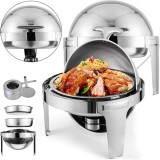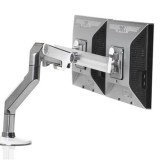Essential Aspects of Small Farm Design Ideas
Small farm design ideas play a pivotal role in shaping the functionality, efficiency, and overall success of a small-scale agricultural enterprise. Careful planning and consideration of essential factors are crucial to create a productive and sustainable farm that meets the needs of both the land and the farmer.
This comprehensive guide explores the key elements that must be taken into account when designing a small farm. By addressing these aspects, farmers can optimize their operations, increase yields, and create a thriving agricultural environment.
1. Land Selection and Utilization
The choice of land and its proper utilization form the foundation of any successful farm design. Factors such as soil quality, topography, water availability, and sunlight exposure must be meticulously assessed.
Effective land use involves dividing the farm into designated areas for different purposes, such as crop production, livestock grazing, and infrastructure. Utilizing vertical space through trellises and raised beds can maximize crop yield in limited areas.
2. Water Management and Irrigation
Water is vital for plant growth and animal well-being. Designing an efficient water management system is essential to ensure adequate irrigation while conserving water resources.
Water sources, such as wells, rainwater collection systems, and ponds, must be identified and utilized effectively. Irrigation techniques, including drip irrigation, sprinkler systems, and flood irrigation, should be selected based on crop needs and water availability.
3. Crop Selection and Rotation
Choosing the right crops and implementing crop rotation practices are crucial for maximizing yield, controlling pests and diseases, and maintaining soil health.
Factors to consider include climate compatibility, market demand, crop yield, and crop compatibility. Crop rotation involves planting different crops in the same area in a planned sequence to prevent soil depletion and promote biodiversity.
4. Livestock Integration and Pasture Management
Integrating livestock into a small farm design can enhance overall productivity and sustainability.
Planning for pasture management is essential, including grazing strategies, animal breed selection, and pasture improvement techniques. Integrating livestock into crop production through rotational grazing can improve soil fertility and reduce the need for synthetic fertilizers.
5. Farm Infrastructure and Equipment
Adequate infrastructure and equipment are essential for efficient farm operations.
This includes fencing, storage facilities, machinery sheds, and animal housing. The design should consider the ease of access, functionality, and maintenance of these structures.
6. Sustainable Practices and Environmental Stewardship
Incorporating sustainable practices into small farm design is vital for long-term success.
Practices such as organic farming, water conservation, soil health management, and biodiversity promotion ensure the farm's environmental sustainability and resilience.
Conclusion
Designing a small farm requires careful consideration of essential aspects, from land selection to sustainable practices. By incorporating these elements into their plans, farmers can create efficient, productive, and environmentally responsible agricultural systems that meet the demands of a growing population while preserving the integrity of the land.

28 Farm Layout Design Ideas To Inspire Your Homestead Dream

Inspiring Homestead Farm Design Ideas Homesteading Layout

Backyard Farm Designs For Self Sufficiency Weed Em Reap

28 Farm Layout Design Ideas To Inspire Your Homestead Dream Plans Gardens

Backyard Farm Designs For Self Sufficiency Weed Em Reap

27 Most Profitable Small Farm Ideas

Small Farmhouse Design Ideas You Will Love

Design A Small Farm Garden The Old Farmer S Almanac

Tiny House Plans For Farm Style Cottages

Backyard Farm Design Ideas








